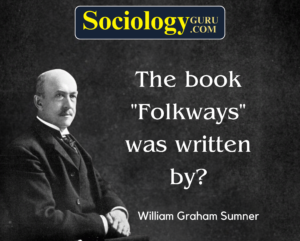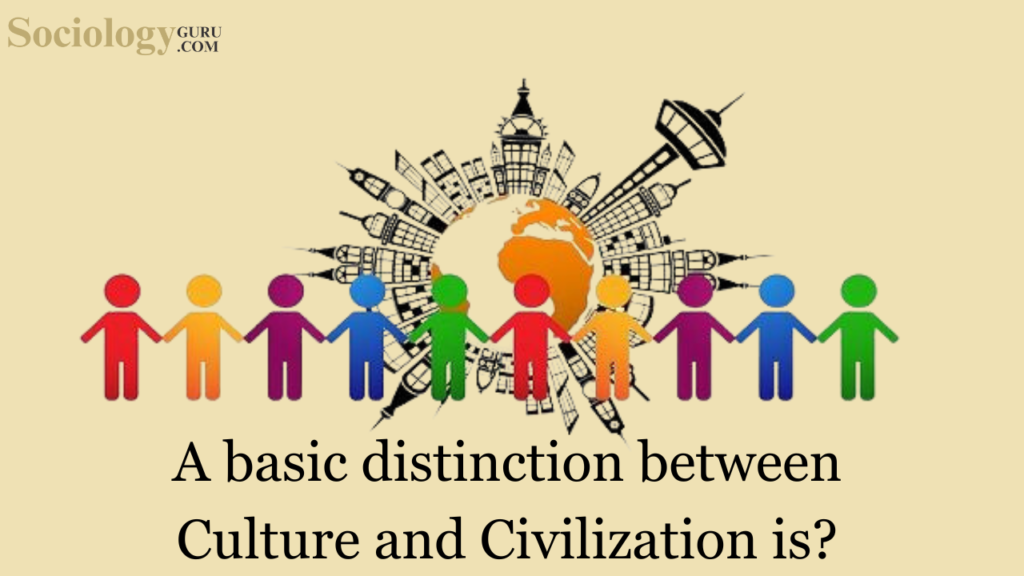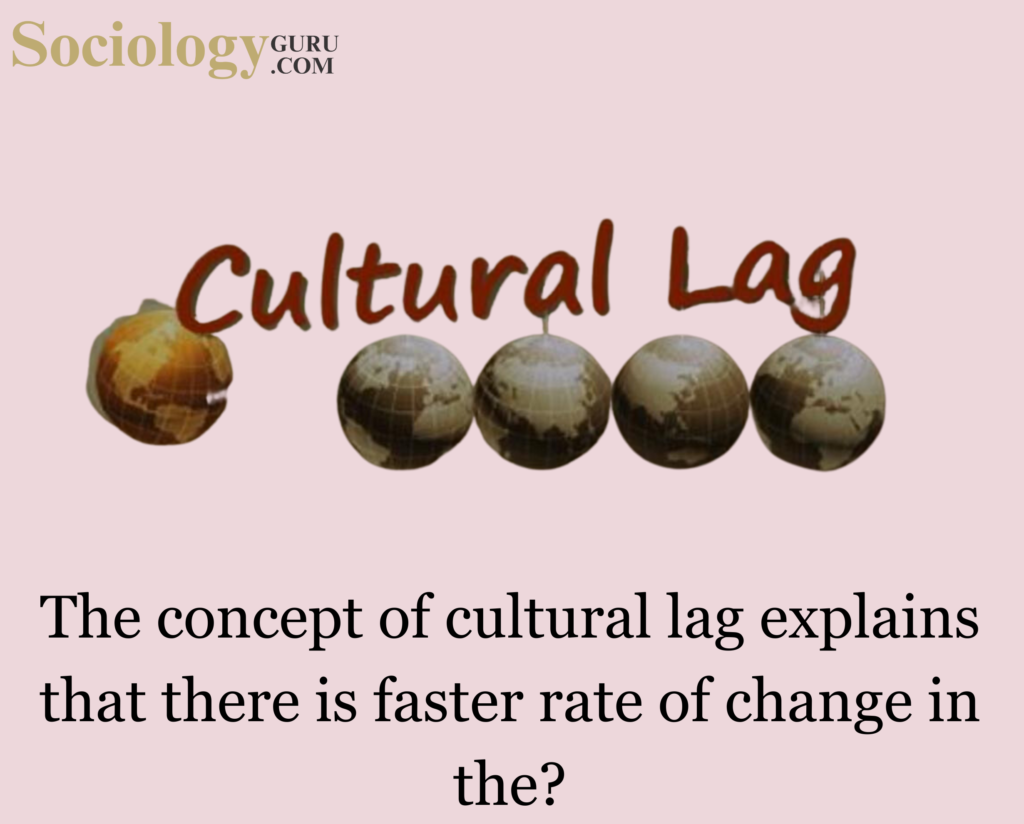Question: The book “Folkways” was written by?
- B. Malinowski
- Maciver
- Sumner
- F.G. Bailey
Answer: (3)The question centers around the authorship of the book “Folkways,” with options including (a) B. Malinowski, (b) Maciver, (c) Sumner, and (d) F.G. Bailey. The correct answer is (c) Sumner. “Folkways” is a seminal work written by William Graham Sumner, a renowned Yale sociologist, and the book was published in 1906. Sumner’s “Folkways” represents a significant contribution to the field of sociology, particularly in the exploration of norms, rules, and social controls that govern individual and institutional behavior within a society. “Folkways,” as a term, was coined by Sumner himself and serves as a central concept in his book. The term encompasses a broad range of norms that play a crucial role in shaping and regulating social life. Sumner’s work goes beyond a mere description of these folkways; it delves into their influence on individual behaviors, social interactions, and the functioning of various social institutions. Folkways, according to Sumner, represent the customary and habitual ways of behaving within a society. They encompass a spectrum of norms, including mores, customs, traditions, rituals, fads, fashions, manners, and etiquette. These norms prescribe and proscribe specific behaviors, establishing what is deemed appropriate or inappropriate within a given cultural context. Folkways are deeply ingrained in social life, providing a framework for social order and cohesion. The significance of folkways extends to their role in legitimizing social actions, interactions, institutions, and associations. By providing a set of accepted norms, folkways contribute to the establishment of social legitimacy. Social actions aligned with these norms are considered acceptable, while deviations may be met with disapproval or sanctions. Folkways, therefore, serve as a mechanism for social regulation and coherence. Sumner’s exploration of folkways also underscores their connection to various forms of social repetition. From daily routines to special occasions, folkways shape customs and rituals that are re-enacted over time. This repetition contributes to the continuity of social practices and reinforces the cultural fabric of a society. Whether in the context of mealtimes, work routines, holidays, or significant life events such as births and funerals, folkways play a pivotal role in shaping social behavior and expectations. Customs, as a subset of folkways, are particularly influential in the preservation and transmission of cultural practices. Sumner’s analysis of customs within the framework of folkways emphasizes their role in maintaining social order and continuity. The observance of customs becomes a way of affirming cultural identity and reinforcing a sense of belonging within a community. Moreover, Sumner expands the application of folkways to various social institutions, including art, science, medicine, politics, law, education, and religion. Each of these institutions is subject to the influence of folkways, shaping the norms and practices that define them. For instance, the appreciation of art is guided by cultural norms, just as scientific practices are influenced by societal expectations and rituals. Sumner’s work in “Folkways” has enduring relevance in the field of sociology. The concept he introduced has been foundational in understanding the intricate web of norms that govern human behavior and shape societies. The book has inspired subsequent generations of sociologists to explore the dynamics of culture, social norms, and their impact on individual and collective actions. In conclusion, “Folkways” was written by William Graham Sumner, a distinguished sociologist who made substantial contributions to the field. Sumner’s exploration of folkways, as presented in his 1906 book, has provided a comprehensive understanding of the norms, rules, and social controls that underpin societies. The concept of folkways, encompassing a diverse array of norms, has proven to be a valuable tool for sociologists in analyzing social behavior, institutional functioning, and the continuity of cultural practices. Sumner’s work remains influential in shaping discussions on culture, social order, and the intricate connections between individual actions and societal norms. |
Take a Quick Sociology Quiz to measure your Performance
Frequently Asked Questions:
1. Question: Define the term “ethnic movement” and provide an example from India.
Answer: An ethnic movement refers to a collective effort by a group sharing common cultural, linguistic, or religious traits, seeking to assert their identity and rights; an example from India is the Khalistan Movement in Punjab.
2. Question: Identify the main objectives behind the Gorkhaland ethnic movement.
Answer: The Gorkhaland ethnic movement primarily seeks to establish a separate state for India’s Nepali-speaking population in the Darjeeling region, advocating for linguistic and cultural recognition and political autonomy.
3. Question: What was the Operation Blue Star, and which ethnic movement was it related to?
Answer: Operation Blue Star was a military action in 1984, aiming to remove Sikh militants hiding in the Golden Temple in Amritsar; it is related to the Khalistan movement, which sought a separate Sikh country.
4. Question: Mention a critical factor that triggered the emergence of ethnic movements in India, as discussed by Dipankar Gupta.
Answer: Dipankar Gupta emphasized that ethnicity is fundamentally a political process, wherein caste and religion, the key components of identity formation, are politicized by leaders for vested interests.
5. Question: What were the primary reasons for the Assam Ethnicity conflicts involving Bodo tribals and Bengali Muslim settlers?
Answer: The Assam Ethnicity conflicts primarily stemmed from issues related to immigration, land rights, and resource allocation, leading to clashes, riots, and evolving relationships among indigenous communities to address challenges.
6. Question: Briefly describe the role of the Dravidian Movement in terms of caste and societal structure.
Answer: The Dravidian Movement, led notably by E.V. Ramasamy, aimed to establish an egalitarian society, focusing on anti-Brahmanism and advocating for equal rights for backward castes, while also introducing reforms like self-respect marriages.
7. Question: Name the prominent ethnic movements in North-East India and specify one common objective.
Answer: Prominent ethnic movements in North-East India include the Nagas’ and Mizos’ struggles; a common objective was to gain autonomy and recognition for their distinct tribal identities and cultural uniqueness.
8. Question: What is the key argument of Gail Omveldt regarding traditional Indian society and multiculturalism?
Answer: Gail Omveldt opposed romanticizing traditional Indian society, arguing that hierarchy has always dominated it and dismissing the notion that multiculturalism is an intrinsic feature of Indian society as a myth.
9. Question: Briefly explain the social hierarchy factor as a contributing element to ethnic movements as suggested by Olzak.
Answer: Olzak suggests that the construction of hierarchies among ethnic communities, which often leads to the suppression of one group by another, is a key factor that can instigate social and ethnic movements.
10. Question: Identify one consequence of the unequal economic development factor within the context of ethnic movements in India.
Answer: One consequence of unequal economic development is the marginalization and underdevelopment of certain groups, leading to feelings of alienation and sometimes initiating ethnic movements as these groups strive for equality and recognition.
To master these intricacies and fare well in the Sociology Syllabus, aspiring sociologists might benefit from guidance by the Best Sociology Teacher and participation in the Best Sociology Coaching. These avenues provide comprehensive assistance, ensuring a solid understanding of sociology’s diverse methodologies and techniques.
META TAGS:
Why Vikash Ranjan’s Classes for Sociology?
Proper guidance and assistance are required to learn the skill of interlinking current happenings with the conventional topics. VIKASH RANJAN SIR at SOCIOLOGY GURU guides students according to the Recent Trends, making him the Best Sociology Teacher for Sociology.
At Sociology Guru, the Best Sociology Coaching platform, we not only provide the best study material and applied classes for Sociology but also conduct regular assignments and class tests to assess candidates’ writing skills and understanding of the subject.
Choose The Best Sociology Teacher for your Preparation?
To master these intricacies and fare well in the Sociology Syllabus, aspiring sociologists might benefit from guidance by the Best Sociology Teacher and participation in the Best Sociology Coaching. These avenues provide comprehensive assistance, ensuring a solid understanding of sociology’s diverse methodologies and techniques. Sociology, Social theory, Best Sociology Teacher, Best Sociology Coaching, Sociology Syllabus.
Best Sociology Teacher, Sociology Syllabus, Sociology, Sociology Coaching, Best Sociology Coaching, Best Sociology Teacher, Sociology Course, Sociology Teacher, Sociology Foundation, Sociology Foundation Course, Sociology CUET, Sociology for IAS, Sociology for UPSC, Sociology for BPSC, Sociology for UGC NET, Sociology for JPSC,
Follow us :
KEYWORD:-Folkways, Folkways, Folkways, Folkways, Folkways, Folkways, Folkways, Folkways, Folkways, Folkways, Folkways, Folkways, MA CUET SOCIOLOGY



